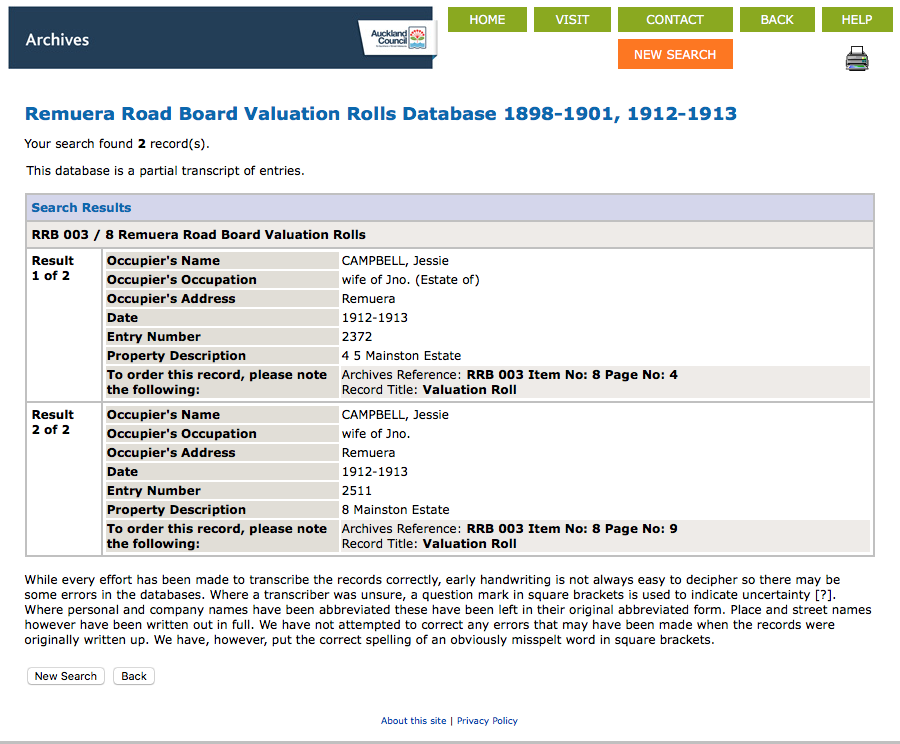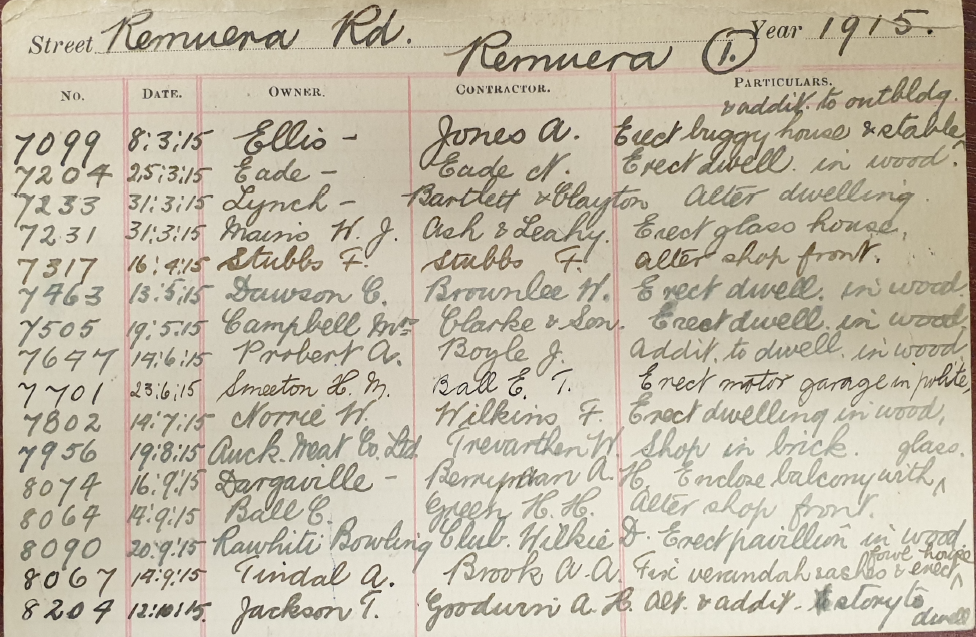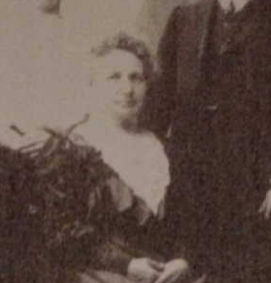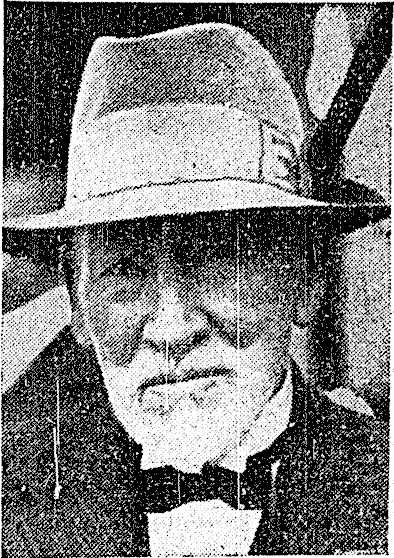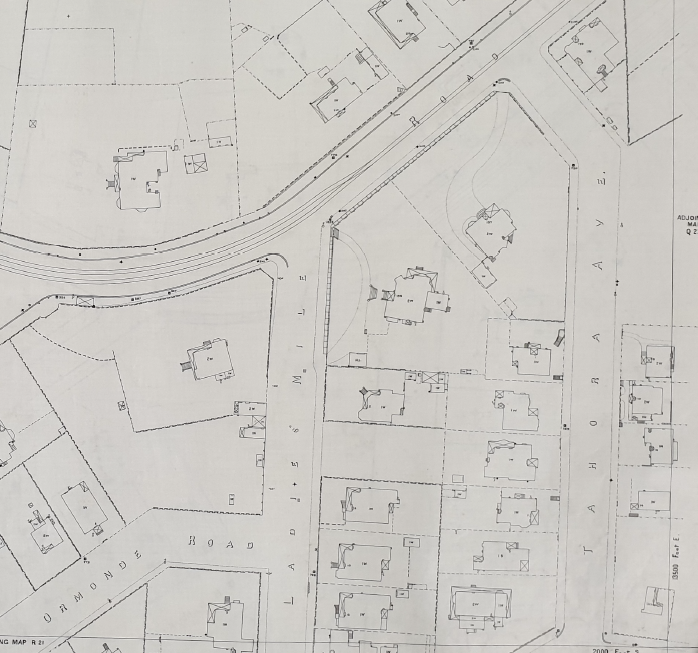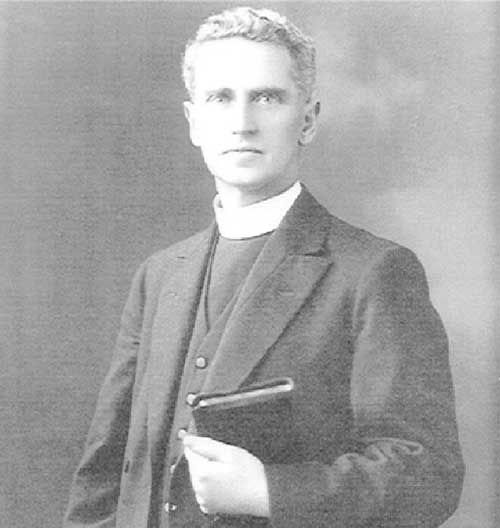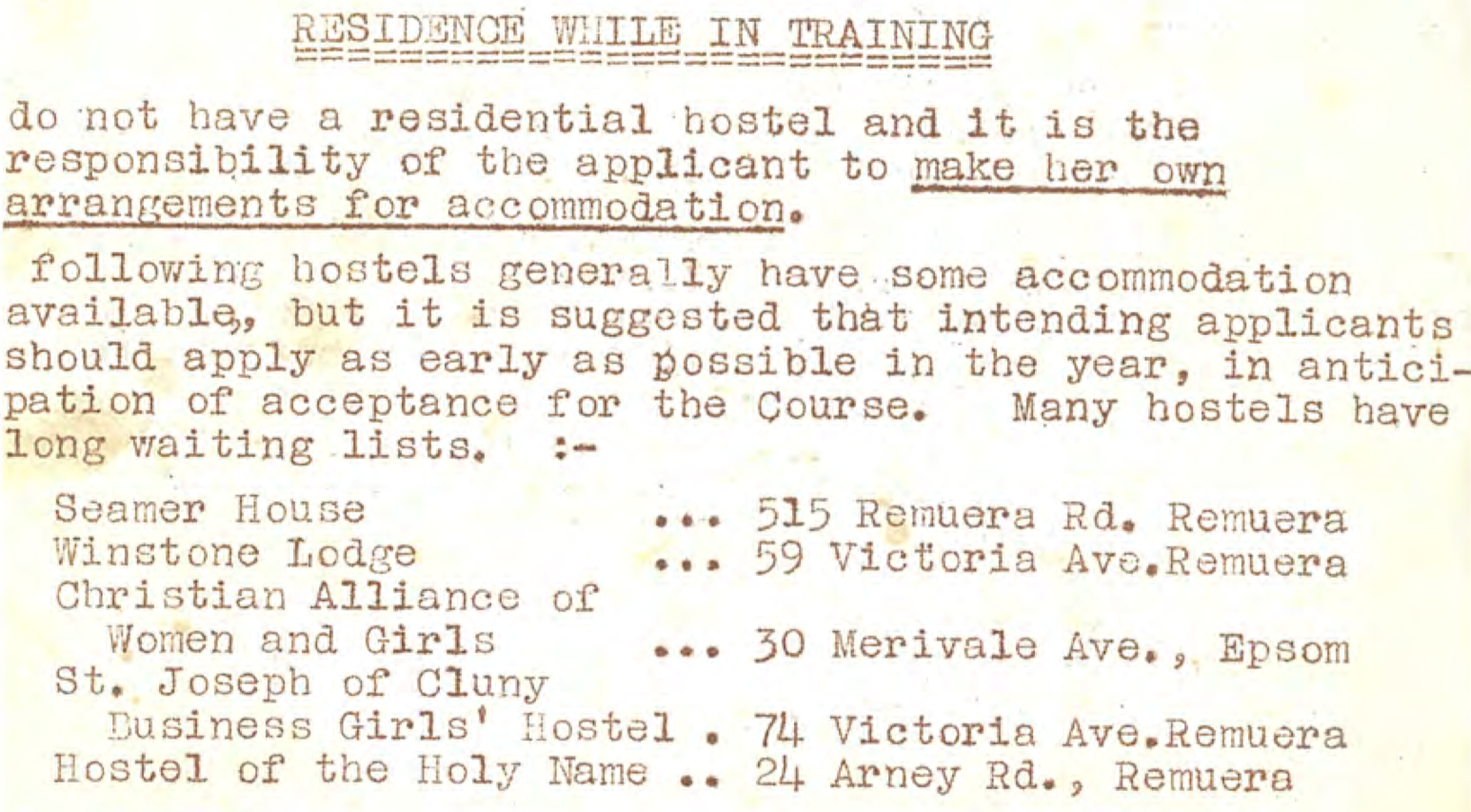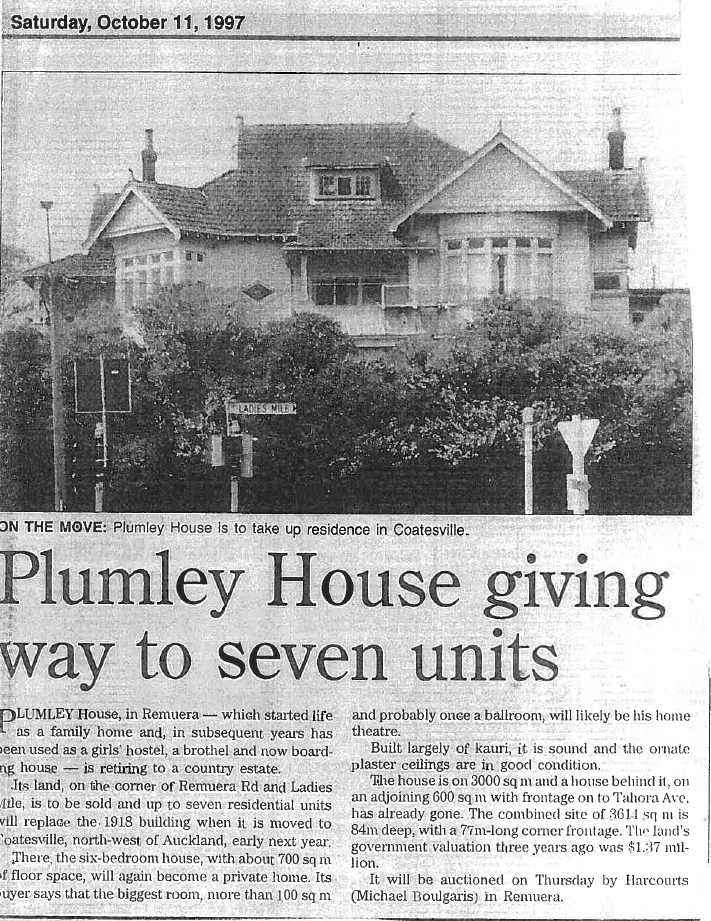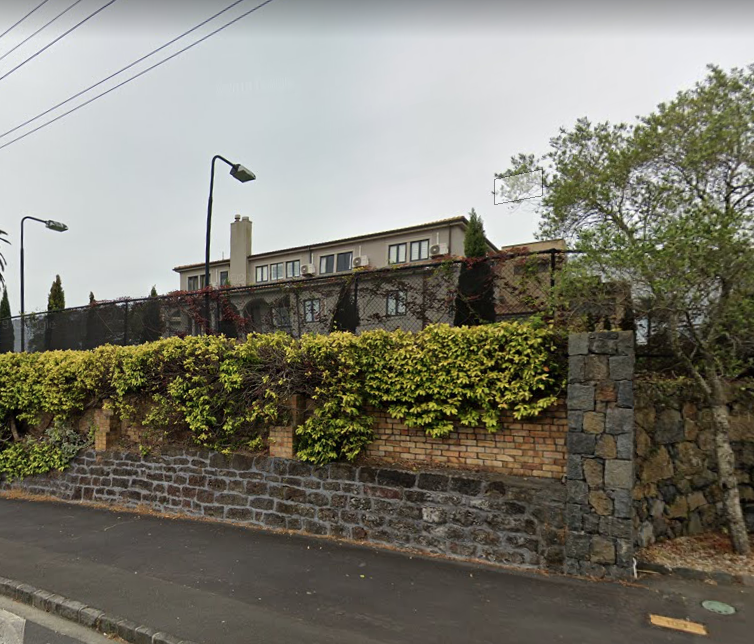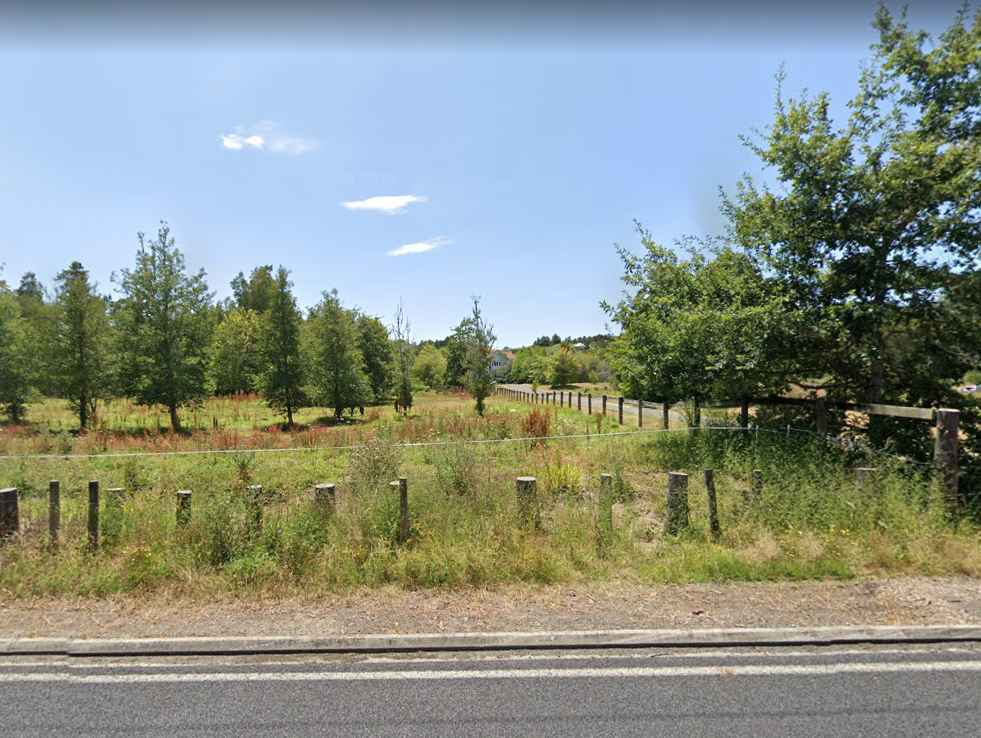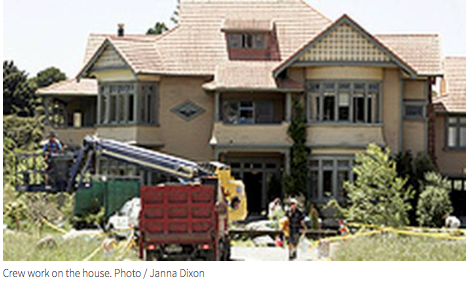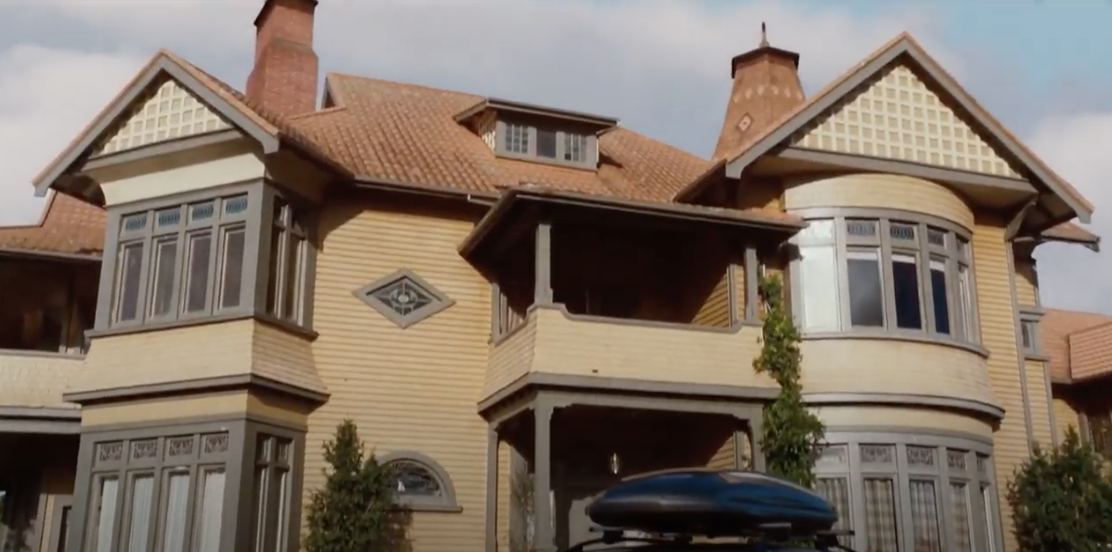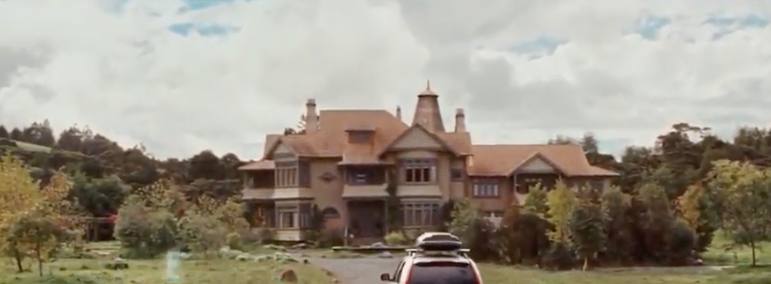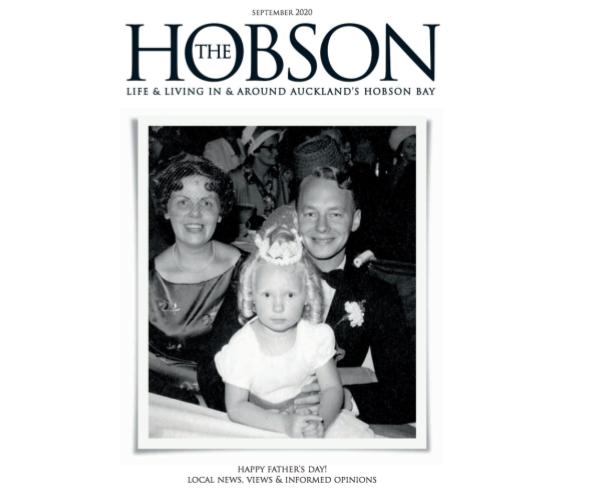Plumley House – Seamer House, 515 (195) Remuera Road, Remuera
The house at 195 Remuera Road (later 515) was built for Mrs Jessie Campbell around 1915. The home was referred to as ‘Plumley’ House later in the century, however the origin of the name has yet to be ascertained.[1]
The boundaries of the property on the corner of Remuera Road and Ladies Mile, extended into Tahora Avenue.
The property was part of the Mainston Estate (1912-1913) with lot numbers 4, 5 and 8 owned by Mrs Jessie Campbell (nee Falconer) (1850-1923), from the estate of John Campbell. [2, 3] On 19 May 1915, a building permit was sought for the erection of a dwelling in wood for Mrs Campbell on Remuera Road. The contractor was Clarke & Son.[4]
The Wise’s Post Office Directory and the Electoral Rolls show Mrs Campbell at a Remuera Road (Ladies Mile) address from 1913-1919, and in 1920 at 36 Victoria Avenue, Remuera. In 1911 the electoral roll records Jessie and husband John (1846-1912) as being domiciled at Mount Hobson.
Large “manors or mansions” in the Remuera area were selling for around £1400-£1700 early in the twentieth century. [5]
When the property was advertised for sale by Estate Realties Ltd of Remuera, for the Methodist Church of New Zealand, on Saturday 12 December 1987 it was stated to be “one of the few magnificent homes of the day, constructed completely in kauri”. It was 3615m2, with almost one acre of parklike grounds, and included a three bedroom cottage at 1 Tahora Avenue. The entrance was through “double doors to a magnificent entrance foyer leading to stairway, billard, lounge and dining rooms, all with superb ornate plaster ceilings.” Other features included stained glass bay windows, six open fireplaces, three master bedrooms and six other double bedrooms, attic and cellar areas, and expansive views of Auckland and its harbour.
The property was purchased by master mariner, William Ross in 1919. [6] Captain William Ross (1847-1939) was born about 1847, in Scotland, and made a name for himself as a veteran trader in the South Pacific, life member of the RNZ Yacht Squadron and as the “father” of the Auckland Anniversary Day Regatta. [7]
In c1922 the property was recorded as being a two-storey wooden construction with a single storey wooden structure on its east elevation. [8]
Captain Ross lived at 195 Remuera Road until around 1935, with his wife Annie Ross (nee Palmer) (1859-1950). Annie appears on the Electoral Roll at 195 Remuera Road from 1919. The 1928 Electoral Rolls have Captain Ross as retired at 195 Remuera Road, and by 1935 although he is still appearing on the Electoral Rolls for 195 Remuera Road, he and Annie are living at 29 Gt South Road.
He died at the age of 89 at 29 Gt South Road. He was buried 30 June 1939 at Purewa Cemetery. [9, 10]
In 1933 the house was bought by retired farmer Issac Gelston Gray (1865-1955) and wife Elinor Gray (nee Mellsop) (1877-1955). [11]
In 1937 a Nurse Sutherland negotiated a five-year lease with Mr Gray [12], alterations were made to the dwelling and the house became a convalescent and rest home, called ‘Ewhurst’. [13, 14, 15]

Seamer House staff and residents opening day, 27 August 1955. (Methodist Church of New Zealand Archives, Photographs Collection cat no M10)
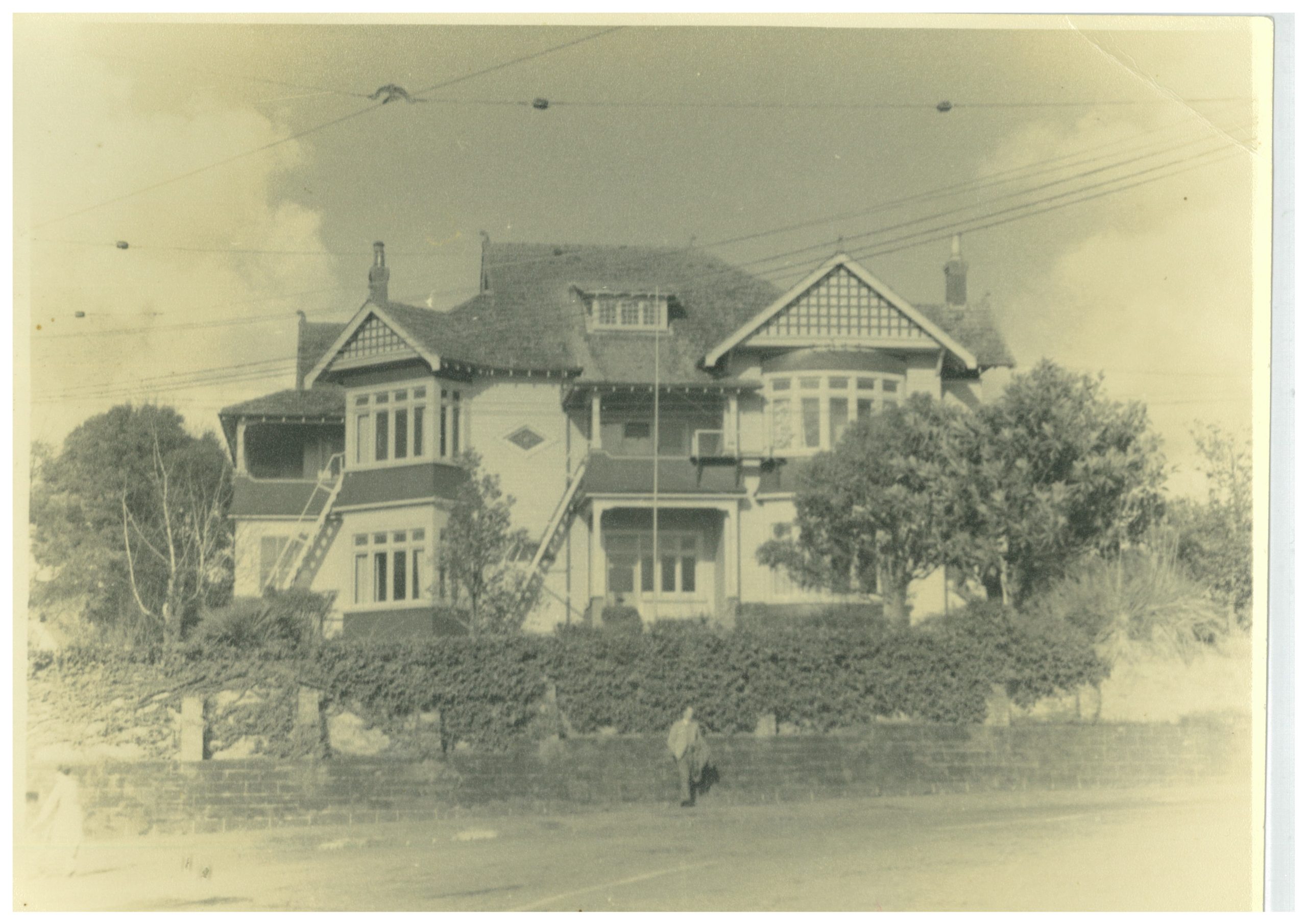
Seamer House, circa 1955 (Methodist Church of New Zealand Archives, Photographs Collection cat no M69)

Seamer House, circa 1960 (Methodist Church of New Zealand Archives, Photographs Collection cat no M69a)
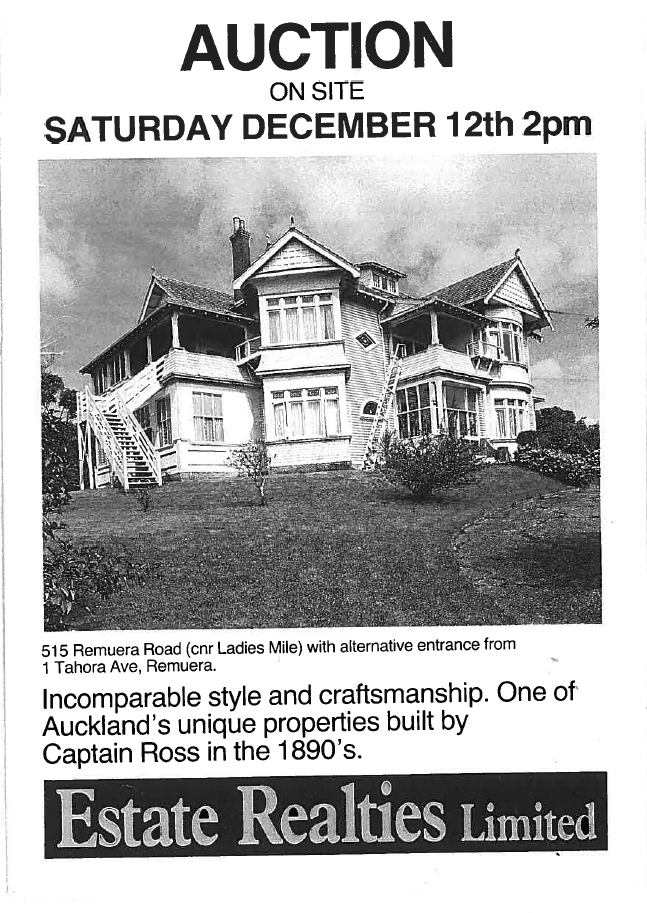
Auction notice, Saturday 12th December 1987. Estate Realties Ltd, Remuera (Methodist Church of New Zealand Archives).

Auction notice, Saturday 12th December 1987. Estate Realties Ltd, Remuera. (Methodist Church of New Zealand Archives).
In 1954 the house was sold to the Methodist Church of New Zealand for a hostel for Maori girls, and renamed Seamer House.
Seamer House was named after the Reverend Arthur Seamer, who was Superintendent of the Maori Missions. [16], (1)
The house was bought for £11,250, with a significant government investment. The new owners moved into the house in 1954 before the alterations [17, 18] were complete, and the hostel furnished, as they were fearful of vandals. The house and the garden needed much attention. As the girls began to arrive a committee of ladies was formed to help with sewing, mending etc from the Remuera Methodist Church, the Maori Mission, and Friends of Seamer House. A gardener was employed who lived in a self-contained flat at the side of the garage, by the gate. [19]
Seamer House residents included students from the Kindergarten Training College, 43 Arney Road, and other training institutions. In the 1950s there was a demand for good accommodation for girls from smaller towns, who wished to get training and jobs in Auckland. The hostel was run on Christian principles and teachings, and the girls attended the Remuera Methodist Church, or their own church, every Sunday morning, and went to the Maori Mission Service in Airedale Street once a month.
Matron Eileen Moore (4) commented “the girls came from different parts of the country, some settling better than others. One girl had never lived in a Pakeha house before, she was scared stiff to go outside the gate alone because of the traffic, and was afraid to go to sleep because in such a big house she was afraid of ghosts”. The girls came from all walks of life, including borstal and orphanages, and girls who just “wanted to spread their wings”. [19]
Matron Moore described the hostel as having “a large dining and sitting room, with divided doors, kitchen with an island bench, stainless steel benches, wash-house, washing machine etc, outside bedroom and sewing room, two (more) bedrooms, and Matron’s bed-sitting room, toilets, and a very large entrance hall. Upstairs there were three very large bedrooms divided by wardrobes in the centre of the room, three double bedrooms, a bathroom and toilet, and large verandahs with beautiful views over the city and suburbs. A basement with two large rooms – one as a games room and the other a drying room, stores etc”. Matron comments about the problems she had keeping the hall clean, the floor “was covered with a rubber lino with a sponge rubber underlay. I have never spent so much time on my knees and blessing those who put it down… every sharp piece of gravel cut through the rubber and every mark showed”. [19]
Matron noted that initially there was opposition from the neighbours who did not appreciate a hostel in their area, nor the noise the girls made, but once they got to know the matrons and girls their attitudes changed.
From 1962-1981 further applications were made to Auckland City Council to upgrade the dwelling to a hostel, including enclosing two verandahs, erecting partitions and fire escapes, enclosing the stairway to convert the attic room to a study room, and adding a staff room and bedrooms. [20, 21, 22]
In 1987 the Methodist Church sold Seamer House (4, 5).
The house then became a boarding house, and reportedly a brothel. In late 1997 the house was sold for removal, making way for up to seven units to be built. (6) A new single dwelling was built on the site.
Plumley House was relocated to 162 Sunnyside Road, Coatesville and has taken on a new life as a restored country estate. A two-storey, 22-room manor that presides over 5.5ha of rolling fields. The property was valued at $3m in 2008 [23]
In 2008 the house was the set for the movie “Aliens in the Attic”. The Herald on Sunday reported film-makers spent $700,000 restoring the house. [23, 24]
‘The Hobson’ in its September 2020 issue edited the Plumley-Seamer House story for publication – “If these walls could talk…”
The Hobson Seamer House Sept 2020
Jan Bierman
July 2020

